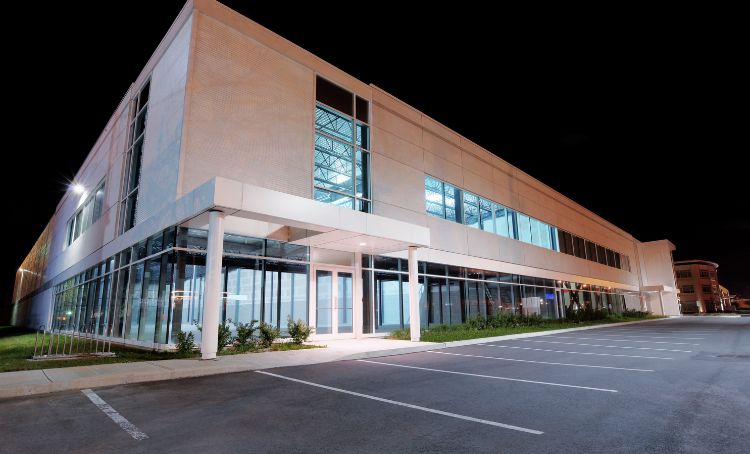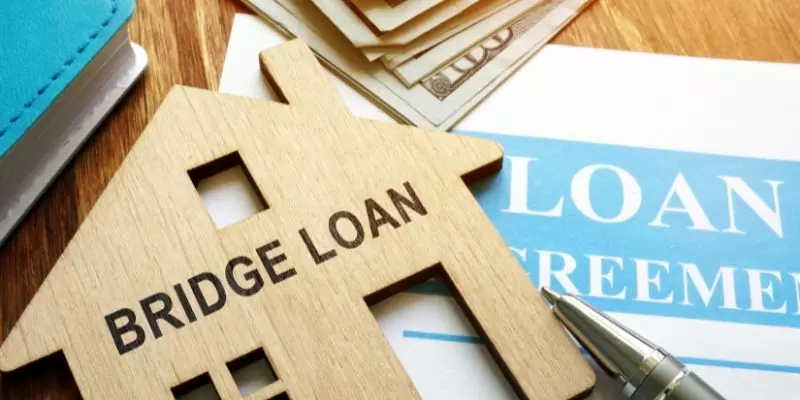For commercial real estate investors, multifamily properties are frequently overlooked as viable acquisitions.
Many commercial real estate investors have their sights set on flipping houses, or developing property for shopping centers, hospitals, and other business-focused transactions.
However, multifamily properties offer advantages that other real estate investments do not and are a proven way to create a passive income.
In this article, we’ll cover those advantages along with a few tips on how to get started on your investment journey.
What Are Multifamily Properties?
Multifamily properties are large residential buildings which house multiple living units, such as apartments or condos. These buildings are often owned and managed by a single entity, typically a real estate investment company.
Adding a multifamily property to your investment portfolio can provide several advantages to investors, including increased rental income, greater cash flow stability, and tax benefits.
What’s the 50% Rule of Multi-Family Property Investment?
The 50% Rule of MultiFamily Property real estate Investing is a guideline used by real estate investors to estimate the operating expenses associated with owning and managing a multi-family property.
The rule suggests that an investor should expect to spend 50% of their gross rental income on operating expenses, such as repairs, maintenance, taxes, insurance, accounting and legal fees.
4 Advantages Of Investing In Multifamily Properties

1. Multifamily Properties Provide A Financial Cushion
Flipping houses and developing properties for businesses can be extremely lucrative. Yet the payoff between projects can be months. This lag can cause a severe strain on cash flow.
Having at least one multifamily property in your portfolio can provide a more consistent revenue stream to cover financial obligations, as well as surplus capital, while waiting on larger projects to reach completion.
Instead of waiting months – and in the case of ground-up construction projects, years – to see a return on investment, multifamily properties will keep finances in the black on a monthly basis.
2. Higher Return on Investment (ROI)
Multifamily properties often generate higher returns than other types of investments due to the fact that they can house multiple tenants at once.
Having a single-family rental is wonderful. But if the tenants move on, then that source of revenue dries up until you can find another qualifying resident. Many units in multifamily properties can go for close to the same amount of rent as a full house.
This means that a duplex can bring in twice as much as a single family, and larger complexes (depending on the area per unit) can bring in ten, twenty, or even a hundred times as much revenue per month.
Multifamily properties offer investors the opportunity to generate passive income from multiple tenants at once, providing them with higher returns than other types of investments. These properties also tend to provide more stability in their cash flow, as they are less likely to be affected by market fluctuations.
3. Lower Vacancy Rates
One of the biggest advantages to investing in multifamily properties is their reduced risk of vacancy rates compared to other types of real estate. Vacancy rates are a measure of how often a property is occupied and can be an indicator of the health of the rental market. Multifamily properties tend to have lower vacancy rates than single-family homes or commercial properties, as they provide more diversity in terms of size and amenities, making it easier to secure an ongoing monthly income.
This makes them more attractive to potential tenants, which in turn means that you’ll have fewer months of vacancy-related losses. Lower vacancy rates can also lead to higher returns on investment over the long term, as you’ll be able to recoup your costs more quickly.
4. Tax Advantages
Multifamily properties provide investors with the potential to benefit from tax advantages. Depending on the type of property, investors may be able to take advantage of deductions and credits that can help reduce their taxable income. This can make a huge difference in an investor’s bottom line, especially when investing in a larger multifamily property.
Commercial real estate investors often don’t take into account the many local, state, and even federal tax advantages to purchasing and renting out multifamily properties.
On local and state levels, there are often tax incentives for investors who purchase and renovate multifamily residences, because the residents boost the economy. Renters want to be near schools, shopping, entertainment, and job opportunities. Most multifamily units are located within reach of these things. As renters take up residence and start working and buying locally, the taxes generated from sales go into the city and state economy.
On a federal level, there are tax advantages for “owner-occupied properties.” If investors take up residence in a multifamily home or building, then maintenance and operational costs can be deducted every year.
What’s the difference between Multi-Family and Single Family Properties?
Multi-Family is obviously not the only property type out there. The primary difference between multifamily and single-family homes is the number of dwelling units that make up each type of property. Multifamily properties usually contain two or more dwellings, while a single-family home will only have one dwelling unit.
Multifamily properties can range from duplexes to apartment complexes, depending on the size and scale of the investment. These come with higher operating costs (more properties = more bills) but often offer multiple sources of income, thus providing more potential for higher returns.
What are the benefits of single-family property investment?

So now we know the difference between multi-family and single-family investments, what are the benefits of the latter?
Investing in single-family property can be another great strategy for real estate investors. Single-family properties offer numerous advantages over multifamily investments, including more control, less hassle, and often higher returns. Here are the top three advantages of investing in single-family properties:
1. Greater Control Over Investment
Unlike multifamily investments which require you to deal with multiple tenants and landlords, single-family homes allow you to have total control over your investment. You can decide how to manage the property, set the rental prices, and even choose which tenants are allowed to occupy it.
2. Lower Maintenance Costs
Single-family properties tend to have lower overhead costs since there is only one unit that needs to be maintained. This can help maximize your profits in the long run and could make investing much more profitable.
3. Higher Return on Investment
Since single-family properties often offer higher rental rates and fewer management costs, they tend to generate higher returns for real estate investors, at least on the lower end of the scale. This makes them a great choice for those looking to maximize their return on investment.
4. Easier to Finance
Single-family properties are typically easier to finance than multifamily investments. This is because banks are more likely to lend on single-family homes since they are perceived to be less risky and more stable in the long run.
Banks also tend to offer lower interest rates for single-family homes due to the lower risk associated with them. Additionally, single-family homes often require smaller down payments, making them an attractive option for beginning investors.
Tips For Investing In Multifamily Properties
For those looking to take advantage of the high returns and stability that come with investing in multi-family homes, there are a few key tips to keep in mind.
Research Property Values
Before investing in a multifamily property, it’s important to research the current and historical values of properties in the area. This will give you a better idea of what kind of returns you can expect from your investment.
Have a Plan for Repairs and Maintenance
When investing in multi-family homes, it’s important to have a plan for repairs and maintenance. Repair costs can come at any time so planning will help ensure that the property stays in good condition and that tenants are satisfied with their living conditions. It will also prevent costly surprises down the line and protect your monthly cash flow.
Perform a Market Analysis
Before investing, it’s important to understand the local rental market. Research the potential rent you can charge, and compare that to similar properties in the area. You should also consider future economic trends, such as population growth, job opportunities, and new construction projects. These all affect the real estate market and will help you decide whether an investment in a multifamily property is likely to be profitable.
Consider Financing Options
Financing a multifamily property purchase can be a complex process, and it’s important to understand the various options available. It may be possible to obtain financing through banks or other lenders, or you may consider utilizing crowdfunding platforms or other nontraditional sources of financing.
Consider the risks associated with each option before making a decision, and make sure that any financing you obtain is structured in the most advantageous way possible.
If you’re looking for ways to finance your multi-family project get in touch with the Express Capital Financing team today. We can help you with a range of loan types from commercial loans to private money loans.
What To Look For When Investing In Multifamily Properties

As we’ve shown, when it comes to investing in multifamily homes, there are numerous advantages that make them attractive to investors. However, it is important to take the time to research and understand what factors should be taken into consideration when investing in this type of real estate. Here are some key points to keep in mind when evaluating potential multifamily investment opportunities:
1. Location
When investing in multifamily properties, location is key. Look for areas with strong population growth, job opportunities, and high-quality schools and amenities. By looking for areas that tick all these boxes, investors can maximize rental returns and enjoy long-term success.
2. Property Condition
Make sure to thoroughly inspect the property before investing in order to determine its condition and any necessary repairs or updates that may be needed. Renovation costs can become unwieldy if not appropriately scoped and planned for, so do your homework.
3. Rental Rates
It is important to research the current rental rates in the area and compare those to the potential rent you can charge. This will help you determine whether the investment is likely to be profitable and allow you to generate a steady cash flow.
4. The Seller
It is important to thoroughly research the seller and their background. Make sure that they are legitimate and that they have clear title to the property. Make sure to inquire about any liens or other legal issues that may be attached to the property. It can also be helpful to check with local real estate agents and other investors who have worked with the seller before in order to get an idea of their reputation and how they conduct business.
How To Start Investing In Multifamily Properties
Interested yet? If we’ve got you thinking about investing in multifamily properties, here are some tips on how to get started:
1. Find the Right Property
Once you’ve established your financing strategy, it’s time to start looking for the perfect multifamily property. Make sure to thoroughly inspect any potential properties and take into account factors such as location, rental rates, condition of the property, and more.
2. Determine Financing Options
Before investing in a multifamily property, you need to decide how you will finance the purchase. Consider traditional financing options such as bank loans or private money loans, as well as nontraditional financing sources such as crowdfunding platforms.
Get Professional Help When Necessary
Investing in multifamily properties can be complicated. The entire process can be riddled with things to trip you up.
Decide on How You’re Managing Your Rental Property
You’ll also need to consider how you’re managing the residential properties. It’s often worth looking at a few property management companies to see if they could fit your needs. Property managers come at an additional cost of course, but could avoid costly surprises and save you money in the long run.
If you need assistance, consider enlisting the help of a real estate professional or legal advisor who can guide you through the buying process.
Ready to Get Started?
For commercial real estate investors, multi-family homes offer a range of advantages that other types of investments may not. With higher returns on investment, lower maintenance costs, and potential tax benefits, multifamily properties can be an attractive option for those looking to diversify their real estate portfolios.
If you would like to learn more about the advantages to real estate investing in multifamily properties, call Express Capital Financing at 718-285-0806. We offer a number of accessible commercial real estate financing programs for purchasing, renovating, building, and even refinancing multifamily properties.
FAQs
Q: What Is Rental Property Depreciation?
A: Rental property depreciation is the reduction of an asset’s value over time due to wear and tear, obsolescence, or other factors. In other words, it is the decrease in value that occurs naturally as an asset ages. For rental property owners, this means that they can benefit from deductions on their taxes to offset investment expenses related to income-generating properties. This type of depreciation can be a valuable tool for investors looking to maximize their returns from rental properties.
Q: What’s the 50% Rule of Multi-Family Investing?
A: The 50% Rule of Multi-Family Investing is a guideline for estimating the costs of running an investment property. The rule states that no more than 50 percent of the gross rental income should be spent on operating expenses associated with the multifamily property, such as utilities, taxes, insurance, and repairs. This rule can help investors determine whether the income generated from their multifamily property will cover the expenses associated with it to be able to generate a predictable cash flow.
Q: How Do You Finance a Multi-Family Property?
A: Financing a multifamily property can be an intimidating process for a real estate investor, but it doesn’t have to be. There are several financing options available that can help investors secure the money they need to purchase and maintain these properties. Here are some of the most common ways to finance a multifamily property:
1. Conventional Loans – Conventional loans feature long repayment periods and low-interest rates, making them a popular option for many investors.
2. Government Loans – Government loan programs offer affordable financing options for multifamily properties with certain stipulations.
3. Private Money Loans – Private money loans are typically provided by individuals or groups of individuals and often feature higher interest rates than other types of loans.
4. Hard Money Loans – Hard money loans are short-term financing options that offer a quick solution but come with higher interest rates.
5. Equity Financing – Equity financing involves investors providing capital in exchange for partial ownership of the property.
Q: What’s the Difference Between Single-Family and Multi-Family Investing?
A: The main difference between single-family and multifamily investing is the scale of the investment. Single-family investments typically involve a single home, whereas multifamily investments can involve an entire apartment complex or multiple rental units.
Single-family investors usually have more control over their investment since they are able to invest in one property at a time. This makes it easier to choose their desired location and be more involved in the day-to-day operations of the rental property. On the other hand, multifamily investors have more flexibility when it comes to diversifying their portfolios and potentially earning higher returns on investment.




